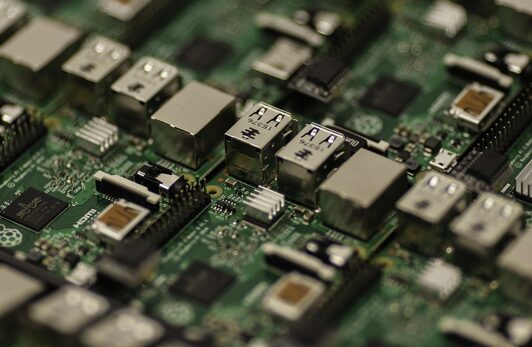When it comes to microcontrollers (MCUs), the first thing that comes to mind is that they have many input/output (I/O) ports, which can be difficult to distinguish. As the core of embedded systems, they can communicate with external devices or sensors. However, the presence of I/O ports often makes learning challenging for many people. This article will discuss some common types of I/O ports and their differences.

1. GPIO (General Purpose Input/Output)
GPIO is the most common type of I/O port. It can be configured for input or output mode. As an input, it can read external signals; as an output, it can control the voltage levels of external devices. GPIO typically has programmable features, such as pull-up/pull-down resistors and interrupt trigger modes.
2. UART (Universal Asynchronous Receiver-Transmitter)
UART is used for serial communication, transmitting data to and from external devices via TX (transmit) and RX (receive) pins. It is suitable for low-speed communication, such as serial communication with a PC or data transmission with sensors.
3. SPI (Serial Peripheral Interface)
SPI is a high-speed, synchronous serial communication protocol typically used for communication between MCUs and peripherals like memory and sensors. The SPI interface includes at least four lines: MOSI (Master Out Slave In), MISO (Master In Slave Out), SCK (Clock), and CS (Chip Select).
4. I2C (Inter-Integrated Circuit)
I2C is a two-wire serial bus used to connect low-speed peripherals. It requires only two lines: SDA (Data Line) and SCL (Clock Line). The I2C bus can connect multiple devices, identifying different devices by address.
5. PWM (Pulse Width Modulation)
PWM ports are used to generate signals with adjustable pulse widths, commonly used for motor control and LED brightness adjustment. PWM ports can be programmed to set the duty cycle, controlling the average output voltage or current.
6. ADC (Analog-to-Digital Converter)
ADC ports are used to convert analog signals into digital signals, typically for reading analog outputs from sensors. Different MCUs may have varying numbers of ADC channels and different resolutions.
7. DAC (Digital-to-Analog Converter)
DAC ports are used to convert digital signals into analog signals, usually for controlling devices that require analog output. Similar to ADC, different MCUs may have varying numbers of DAC channels and different resolutions.
Differences and Operations
These I/O ports have unique characteristics in terms of functionality and operation. For example, GPIO is the most flexible I/O port, configurable for various modes; UART is suitable for low-speed serial communication; SPI and I2C are used for high-speed synchronous or low-speed serial communication and can connect multiple devices; PWM is used to generate adjustable pulse signals; ADC and DAC are used for conversions between analog and digital signals.
In operation, it is usually necessary to configure and control the I/O ports through the MCU’s registers or library functions. For example, configuring the input/output mode of GPIO, setting the baud rate for UART, configuring the device address and communication parameters for SPI or I2C, setting the duty cycle for PWM, and reading or writing values for ADC/DAC.
This article is an original piece by Fan Yi Education. Please indicate the source when reprinting!